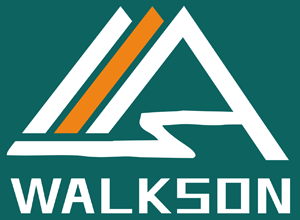Rivers are dynamic forces of nature, capable of shaping landscapes and providing essential resources. However, the same rivers that bring life and sustenance can also pose a threat when they overflow, leading to devastating floods. To mitigate this risk, river dredging plays a crucial role, and at the forefront of this operation are dragline buckets. In this blog post, we will explore four key aspects of how dragline buckets contribute to taming rivers for effective flood control.
Precision Excavation: Managing Riverbed Sediment
River dredging involves the removal of sediment, debris, and other materials that accumulate on the riverbed over time. Dragline buckets, with their immense size and precision engineering, excel in the task of excavating and removing these materials. The buckets are carefully maneuvered to reach the riverbed, where they scoop up sediment and debris with precision, preventing the buildup that could contribute to reduced water flow and increased flood risk.
Channelization for Improved Water Flow
One of the primary objectives of river dredging is to establish or enhance well-defined channels within the river. Dragline buckets play a pivotal role in channelization by strategically removing excess sediment and debris, allowing water to flow freely within designated pathways. This process not only minimizes the risk of flooding but also enhances the overall efficiency of water transport, supporting ecosystems and reducing the impact of sedimentation on downstream areas.
Creating Floodplains: Harnessing Natural Processes
In addition to channelization, dragline buckets are instrumental in creating or restoring natural floodplains. Floodplains act as buffers during periods of increased water flow, absorbing and dissipating excess water. Dragline buckets carefully reshape riverbanks to allow for the creation of these vital floodplains. By leveraging natural processes, river dredging with dragline buckets contributes to sustainable flood control measures that work in harmony with the river ecosystem.
Environmental Considerations: Balancing Impact and Preservation
While river dredging is essential for flood control, it is equally important to consider the environmental impact of these operations. Dragline buckets are designed with this in mind, aiming to strike a balance between flood control and environmental preservation. Through careful planning and adherence to environmental regulations, dragline operators work to minimize disruption to aquatic habitats, protect wildlife, and ensure that the ecological balance of the river ecosystem is maintained.
Dragline buckets are the unsung heroes in the efforts to tame rivers for flood control. Their precision excavation capabilities, role in channelization, contribution to floodplain creation, and consideration for environmental impact make them indispensable in managing the complex dynamics of rivers. As communities continue to face the challenges of unpredictable weather patterns and the increasing frequency of extreme events, the role of dragline buckets in river dredging remains vital in safeguarding lives, property, and the delicate balance of river ecosystems.
 English
English  Deutsch
Deutsch  français
français  русский
русский  فارسی
فارسی  العربية
العربية  Español
Español  日本語
日本語  한국어
한국어  italiano
italiano  português
português  dansk
dansk  Suomi
Suomi 




